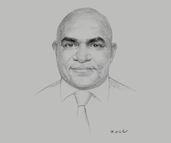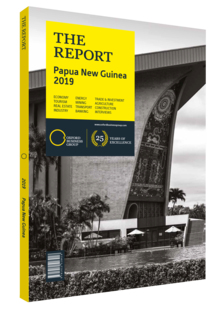Wapu Sonk, Managing Director, Kumul Petroleum: Interview

Interview: Wapu Sonk
How will the energy sector prepare for the growing demand for liquefied natural gas (LNG)?
WAPU SONK: Papua New Guinea is well known for its extensive and profitable gas fields. While our LNG reserves are lower than those found in Qatar or Mozambique, for example, we have a significant amount of discovered gas, and that allows us to play an increasingly important role in the global LNG supply chain.
Many of our offshore and onshore fields have yet to be explored, developed and brought on-line. For instance, in the Gulf Province – where Total is located – only around 20% of the area has been explored thus far. We will continue to benefit from our proximity to Asian markets, which limits transportation costs and offers lower geopolitical risk than the Middle Eastern market. It will be important for us to capitalise on this advantage by maintaining the progress we have made in terms of project development in our country.
The international LNG market is changing rapidly, however, and we have to be prepared. The Asia-Pacific region as a whole is continuing to shift away from coal and diesel, and towards LNG. New contracts and the growing demand that is expected in the early 2020s will be further representative of that change.
Today we are focusing on traditional buyers such as Japan, Taiwan, Thailand and China. Furthermore, we anticipate new demand will come on-line in the near future from countries such as Singapore, Vietnam and India, and we have seen a surge of demand from second-tier buyers in China. In addition, the Philippines and Indonesia are looking to import more LNG, which further expands the market’s horizons.
Where do you see opportunities for downstream development in PNG’s energy sector, and what incentives will make them possible?
SONK: Most of the development in PNG’s energy sector has been upstream. Nonetheless, there are plenty of opportunities for PNG to continue diversifying its gas-based businesses, such as power generation and gas supply for cement and other industrial materials and products. For instance, we have used gas for electrification in a number of projects, with one of our first investments being a 58-MW power plant in Port Moresby. We are also planning a gas supply project for a quicklime and cement factory near Port Moresby. Another initiative in which we are involved connects the Highlands grid to the Hides gas field. We also aim to bring more gas to Lae using small scale LNG tankers and later build a power plant.
Due to domestic market obligations policy provisions, there is now enough gas to commercialise once gas is available at the right price and various projects become financially viable. We need to support third-party access to pipelines and other essential infrastructure, encouraging not only electrification but also the use of gas in petrochemicals. This will make it easier to explore and continue to develop smaller gas fields across PNG.
While the government recognises the importance of utilising gas for domestic use, it has yet to implement detailed policy and incentives such as tax holidays and detailed third-party access policy, which would allow for the commercialisation of small or stranded fields.
What regulatory changes are needed for revenues to be distributed more evenly across the economy?
SONK: There are several ways PNG can make better use of its revenues from the extractive industry, which remains the main economic driver. A sovereign wealth fund has notable potential to encourage the further development of a stable, broad and diversified economy. Such a fund would allow the government to invest in tourism and other sectors, as well as create a number of opportunities in telecoms and transport. Furthermore, we would be happy to pay dividends, which should then be split between the government and the sovereign wealth fund to build infrastructure that facilitates the growth of and sustains the economy.
You have reached the limit of premium articles you can view for free.
Choose from the options below to purchase print or digital editions of our Reports. You can also purchase a website subscription giving you unlimited access to all of our Reports online for 12 months.
If you have already purchased this Report or have a website subscription, please login to continue.

